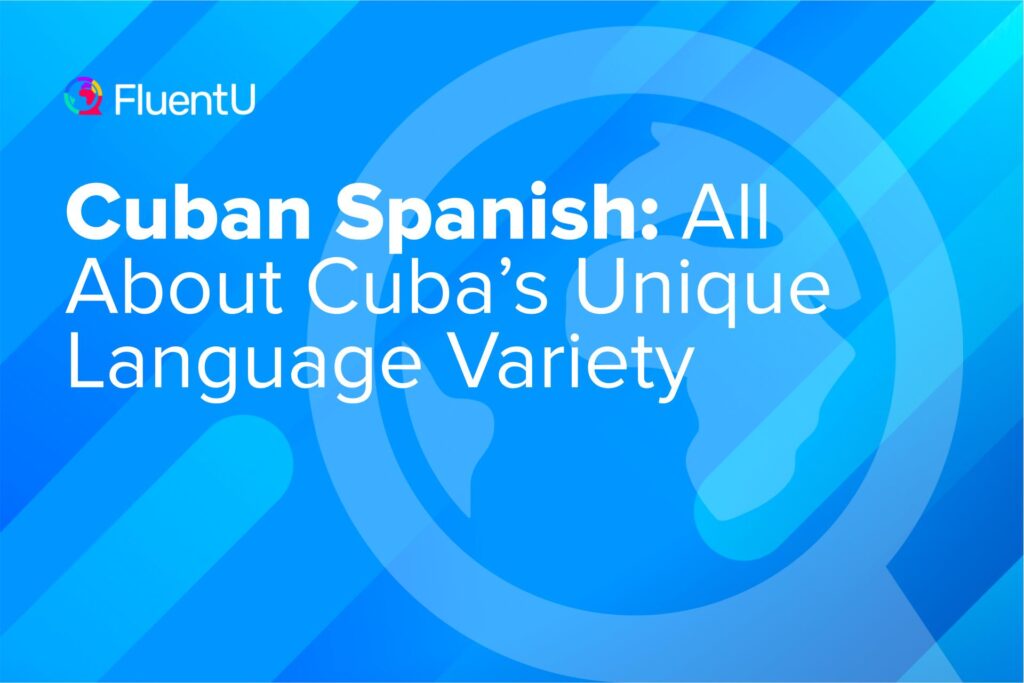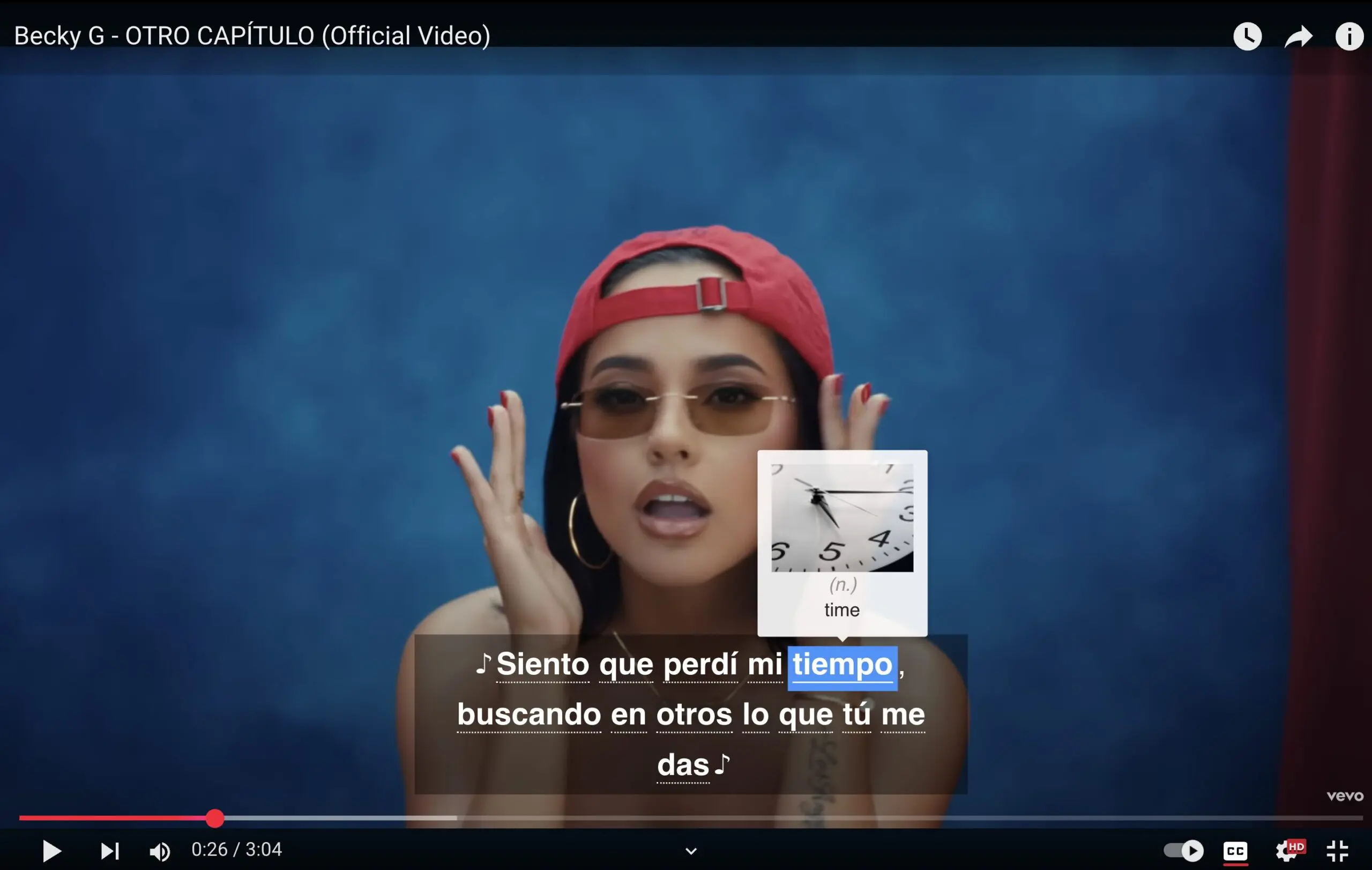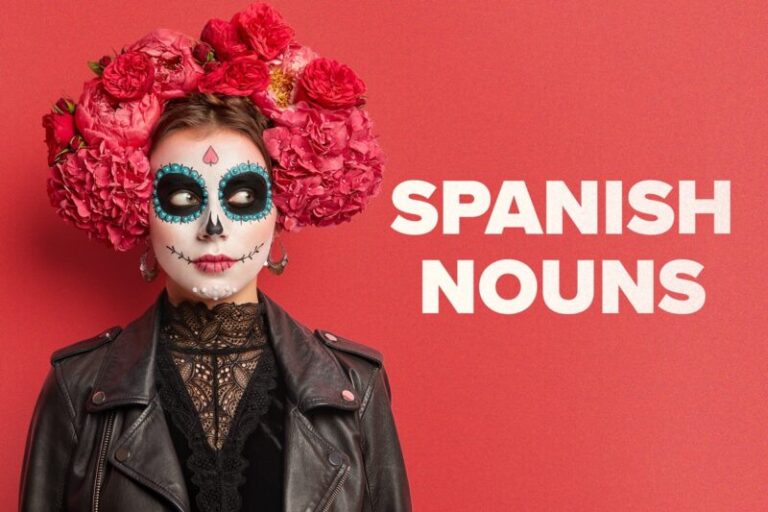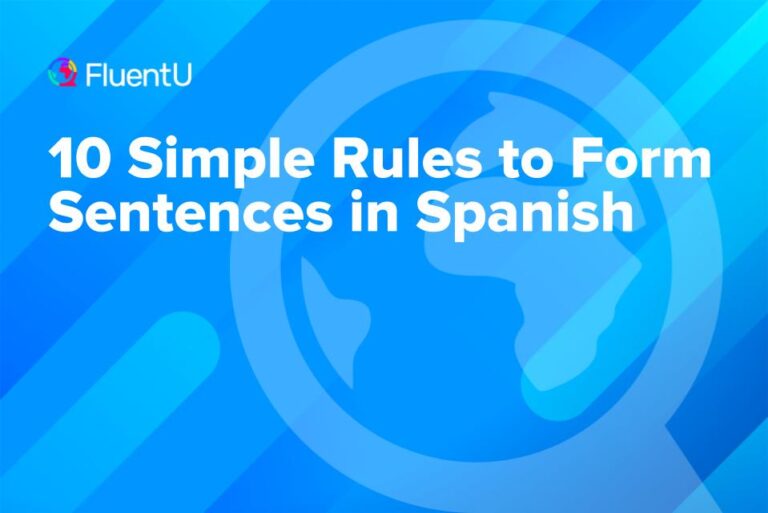Contents
- Cuban Spanish 101
- 21 Key Cuban Slang Words
- 1. Absorbente
- 2. Aguajirado
- 3. ¡Alabao!
- 4. Ambia
- 5. Bachata
- 6. Baracutey
- 7. Baro
- 8. Burumba
- 9. De caché
- 10. Darle candela al jarro
- 11. Chola
- 12. Coger un aire
- 13. Punzada del guajiro
- 14. Darse un tanganazo
- 15. Drinqui
- 16. Echar un tacón
- 17. Emperifollado
- 18. Fachao
- 19. Jugar a los bomberos
- 20. Vacilón
- 21. Zurdo
- And One More Thing…
Cuban Spanish: All About Cuba’s Unique Language Variety

If you want to learn how to speak Spanish like a Cuban, you’ve come to the right place!
Cuba is a true fusion of African and European influences, making it a wonderful challenge for the more advanced Spanish learner to master.
This dialect is a great introduction to the diversity of the Spanish language for anyone who’s traveling to Cuba or who has Cuban friends.
Let’s get started with these tips and tricks for your Cuban adventure!
Download: This blog post is available as a convenient and portable PDF that you can take anywhere. Click here to get a copy. (Download)
Cuban Spanish 101
Spanish came to Cuba via immigrants from the Canary Islands in the 19th century, replacing the indigenous languages. Over time, Cuban Spanish became as unique as the island it’s spoken on. It features a distinct nasal accent and a rhythmic poetic intonation that’s almost song-like. It also contains a lot of slang—both from Spanish-based creole and from its communist history.
Pronunciation and Speech
Much of Cuban speech can be seen as informal, a feature of most Caribbean Spanish varieties. Here are some of the relaxed pronunciations you might come across:
- If a syllable ends in r or l, the sound becomes the same as the first sound of the next syllable. This might sound confusing, but it’s a really easy one in practice. For example, Carlitos becomes Cal-li-tos.
- If d is at the beginning of a syllable within a word, it might not be said at all, e.g. dedo (finger) is pronounced dé-o.
- S at the end of a syllable is often aspirated, and occasionally it’s omitted altogether.
- Occasionally, r becomes l at the end of a syllable or end of a word.
- Consonants at the beginnings of syllables are often spoken more softly than usual Spanish pronunciation dictates.
One of the main differences you’ll find between Cuban Spanish and general Latin American Spanish is the nasal accent and rhythmic intonation. This is the influence of African settlers on the language and makes it sound very different from most other Spanish varieties.
Watch this video to hear a little more about the accent of Cuban Spanish:
Provinces and Language Differences
Cuba has sixteen provinces in modern day. Linguistically speaking, it’s less complicated to consider the historical six provinces of Cuba. These are:
- Pinar del Río — Here you’re most likely to hear r become l at the end of a word or syllable, and occasionally the other way around. This can be hard to understand, so you might have to train your ear to it.
- La Habana — Occasionally, speakers may be heard to speak as in Pinar del Río. The rest of the island outside of Havana is also referred to as campa in Havana.
- Matanzas and Las Villas — These two provinces in the middle of Cuba have no special Cuban dialect.
- Camagüey — This place has some of the different vocabulary of the Oriente province but mostly follows the language of the rest of the island. They use balance instead of sillón for rocking chair and pluma or llave instead of faucet, which is used on the rest of the island for a tap.
- Oriente — The language here is far more similar to Dominican Republic Spanish than the rest of the island. They also have a set of vocabulary words that’s different from the rest of the Cuban island. For example, balde instead of cubo for bucket and guineo instead of plátano for banana/plantain. Here the s sound is also most likely to go unaspirated. The unusual intonation of this province may also be the last remnants of the indigenous language.
Cuban Spanish Grammar
There are some elements of Cuban Spanish grammar that are different to European and Latin American Spanish. These are some features you might want to be aware of:
- Tú comes before the verb, not after it, in a question.
Example: ¿Qué tú haces aquí?
(What are you doing here?)
- Le and les become la and las when after se in a sentence.
Example: A Juana se la ve en la tienda todos los días.
(Juana is seen in the store every day.)
- Decir a is used to show the start of an action.
Example: Si el niño dice a crecer, tendremos que comprarle ropa nueva.
(If the boy starts to grow, we’ll have to buy him new clothes.)
- Para instead of en for saying that someone is somewhere.
Example: Carmen está para la Habana.
(Carmen is in Havana.)
- The phrase ¡Cómo no! (Of course) is ¡Cómo que no! in Cuban Spanish.
- Uno (one, number or pronoun) is used instead of the indefinite article una.
Example: Está uno cansada de tanto hablar.
(One is tired of talking so much.)
- -ico and -ica are used at the end of words instead of -ito and -ita to indicate a smaller or lesser version. This only applies to words ending in to/ta.
Example: Plato (plate) becomes platico (saucer.)
Cuban Slang Overview
Cuban slang, much like slang in many other languages, is a vibrant mix of constantly changing words and meanings.
Cuban slang derives some of its influences from African languages and also features quite a lot of anglicisms.
What I’ll give you has a splash of everything, and they’re all slang words that you might find useful in a Cuban club.
Basic Spanish Knowledge
Of course, you can’t just rely on slang terms and grammar to get you by in a conversation. In order to use these terms and phrases effectively, you’ll have to know basic Spanish grammar.
How do you learn it? It depends on your learning style.
If your non-partying alter ego is willing to sit down with a textbook, then you should make one your new best friend.
If you’re too busy to sit down at all (probably dancing instead, I bet!), try a vocab/grammar driller like Duolingo, with its “throw it at you until you get it” approach.
You can also enjoy native music and entertainment while learning Spanish with a virtual immersion program like FluentU.
FluentU takes authentic videos—like music videos, movie trailers, news and inspiring talks—and turns them into personalized language learning lessons.
You can try FluentU for free for 2 weeks. Check out the website or download the iOS app or Android app.
P.S. Click here to take advantage of our current sale! (Expires at the end of this month.)

Whatever you do, stick with it, because these slang words are waiting for you to be ready to use them!
21 Key Cuban Slang Words
1. Absorbente
This is something you might ask for in your mojito. Yep, it’s a drinking straw! Pretty easy one to remember—just imagine yourself absorbing your drink through a straw.
2. Aguajirado
Maybe feeling a little aguajirado (timid) is keeping you off the dance floor? Well, stop being shy and get out there! In typical Cuban style, the j is likely to be pronounced more softly than you’d expect.
3. ¡Alabao!
Couple of chicos (friendly term for peers) rocking the dance floor? Show your admiration by shouting ¡Alabao!
4. Ambia
Always a good idea to take your ambia (friend) along to a club, for safety as well as fun. Unlike amigo/amiga, ambia stays the same regardless of your friend’s gender!
5. Bachata
The bachata (party) is where it’s at! This word can also be used for noise in a more derogatory way, so watch out for that.
6. Baracutey
If you identify yourself as a baracutey (a person who lives alone) you might not want the party to end if you’re going home alone. The r here might become an l in pronunciation.
7. Baro
Make sure you take plenty of baro (money) with you for drinks.
8. Burumba
Another word for party, burumba can also mean to have fun. If last night was a burumba, it was a very good night. The r in this can also be pronounced as an l.
9. De caché
If you’re looking totally de caché (stylish/elegant) then you’ve done a good job. It may sound a bit old-fashioned to younger people, though.
10. Darle candela al jarro
If your dancing isn’t quite what you’d like it to be, your ambia might cheer you up by saying, ¡Dale candela al jarro! (persevere until you reach your goal!).
11. Chola
Music hurting your chola (head)? Time to get a breath of fresh air!
12. Coger un aire
If you’re wearing a little dress or a light shirt without a jacket on a windy night, prepare to coger un aire (get a spasm)!
13. Punzada del guajiro
Drink your frozen daiquiri too fast and you’ll definitely get la punzada del guajiro (get a brain freeze). Don’t fret, just put your tongue on the roof of your mouth and it will go away.
14. Darse un tanganazo
Be careful on the dance floor. You could trip and darte un tanganazo (bump yourself)!
15. Drinqui
An obvious anglicism, drinqui (alcoholic drink) has quite a fun and unusual spelling.
16. Echar un tacón
If someone asks, you might like to echar un tacón (to dance).
17. Emperifollado
If you’re ready to go out dancing and you’re wearing your best clothes, you might say that you’re emperifollado (polished up).
18. Fachao
If all that dancing has made you fachao (hungry), it’s time to try some Cuban cuisine.
19. Jugar a los bomberos
After dancing all night and starting to ache, you might like to jugar a los bomberos (to take a bath.) This one is very fun to say. Don’t forget the Cuban pronunciation of l for the letter r, and be sure to leave out the s in bomberos.
20. Vacilón
If you find that a Cuban party is a vacilón (something you enjoy a lot), then you’ll love the rest of Cuban life.
21. Zurdo
Who cares if you’re a zurdo (bad dancer)? Get out there and have fun!
For an even more extensive list of Cuban slang words and phrases, check out this post.
Now that you have a vocabulary full of dancing slang and an introduction to general Cuban Spanish, it’s time to get practicing!
Get out there, dance, enjoy.
And soak up every bit of Cuban language, culture and party life that you possibly can!
Download: This blog post is available as a convenient and portable PDF that you can take anywhere. Click here to get a copy. (Download)
And One More Thing…
If you want to learn Spanish with authentic materials but need a little extra support, then you need to know about FluentU.
FluentU lets you consume the same content as native Spanish speakers, but with tools to make it easier to pick up the language while you watch. You’ll learn Spanish as it’s actually spoken by real people, unlike programs that use scripted content.
You can bring our learning tools directly to YouTube or Netflix with the FluentU Chrome Extension, or check out our curated video library full of clips that cover a wide range of topics, as you can see here:
FluentU brings native videos within reach with interactive subtitles. You can tap on any word to instantly see its meaning, an image, and its audio pronunciation. Click on the word for additional examples and to add it to your flaschards.
To reinforce what you've learned, you'll complete engaging exercises and see more examples of the key words from the video. FluentU keeps track of the vocab you’re learning, and gives you extra practice with difficult words.
Start using the FluentU website on your computer or tablet or, better yet, download the FluentU app from the iTunes or Google Play store. Click here to take advantage of our current sale! (Expires at the end of this month.)











